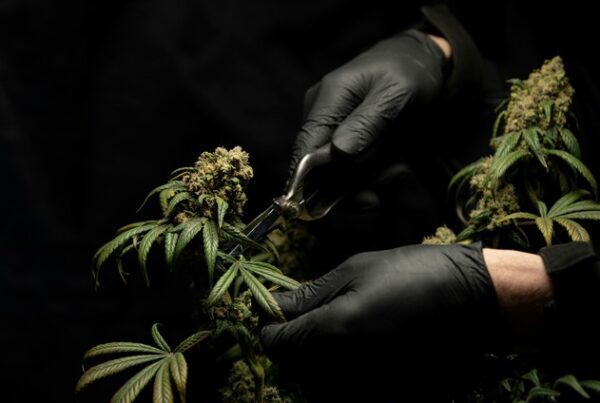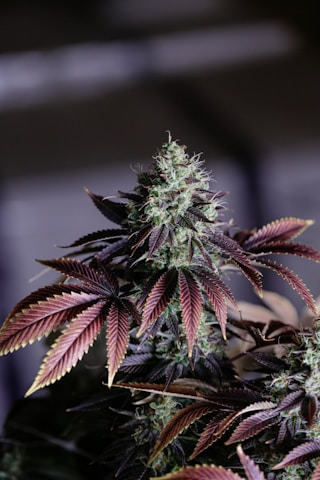Introduction

Importance of Autoflower Seeds in Cannabis Cultivation
Autoflower seeds have revolutionized the cannabis cultivation industry, offering growers a more efficient and versatile approach to producing high-quality plants.
Benefits and Advantages of Autoflower Seeds
These seeds boast numerous benefits, including faster growth cycles, smaller plant sizes, and greater resilience against pests and diseases, making them an attractive option for both novice and experienced cultivators.
Overview of Original Johnny Seed Bank’s Offerings
Original Johnny Seed Bank provides premium cannabis seeds, featuring a wide selection of autoflower strains to suit diverse preferences and desired effects.
Understanding Autoflower Seeds
In this section, we delve into what autoflower seeds are, how they differ from other cannabis seeds, and their genetic background. Gaining a clear understanding of autoflower seeds will help you appreciate their unique qualities and potential benefits in cannabis cultivation.
Definition of Autoflower Seeds
Autoflower seeds are a type of cannabis seed that produce plants that automatically transition from the vegetative phase to the flowering phase without the need for a change in light cycle. Unlike traditional photoperiod plants, which require a specific light schedule to trigger flowering, autoflowering plants will begin to flower based on their age. This unique characteristic allows autoflowering plants to have a faster growth and harvest cycle, making them an attractive option for many growers.
Differences between Autoflower, Photoperiod, and Regular Seeds
There are three main types of cannabis seeds: autoflower, photoperiod, and regular. Autoflower seeds, as previously mentioned, will flower automatically without any alteration in the light schedule. Photoperiod seeds, on the other hand, require a change in the light cycle, typically from 18 hours of light and 6 hours of darkness during the vegetative stage to 12 hours of light and 12 hours of darkness during the flowering stage, to trigger the flowering phase. Regular seeds, meanwhile, can produce both male and female plants, whereas autoflower and photoperiod seeds are often feminized, meaning they will almost always produce female plants which are desired for their higher cannabinoid content.
Genetic Background of Autoflower Seeds
Autoflower seeds are the result of crossbreeding cannabis plants with a subspecies called Cannabis ruderalis. This subspecies is native to colder regions with shorter growing seasons, such as Russia and Northern Europe. Due to the harsh environmental conditions, Cannabis ruderalis plants evolved to have an automatic flowering trait, which allows them to complete their lifecycle before winter sets in. By combining the genetics of Cannabis ruderalis with other cannabis strains, breeders have been able to create autoflowering plants that inherit the automatic flowering trait while retaining the desirable characteristics of their parent strains, such as potency, flavor, and yield.
History of Autoflowering Cannabis
The history of autoflowering cannabis is an intriguing journey that traces back to the origins and development of these unique plants, as well as the evolution and improvements of autoflower strains over time. This section delves into the fascinating background of autoflowering cannabis, providing insights into how these plants have grown to become a popular choice for cannabis cultivators.
Origins and development of autoflowering cannabis
Autoflowering cannabis plants are a result of crossbreeding between Cannabis sativa or Cannabis indica and the less well-known Cannabis ruderalis species. Originating from Central and Eastern Europe and Russia, Cannabis ruderalis plants evolved to survive in harsh climates by developing the ability to flower based on their age, rather than relying on changes in the light cycle like their photoperiod counterparts.
Through selective breeding and experimentation, cannabis breeders were able to combine the desirable traits of Cannabis sativa and Cannabis indica with the autoflowering capabilities of Cannabis ruderalis. This process led to the creation of autoflowering cannabis plants that are capable of producing high-quality buds with unique effects, flavors, and growth characteristics, while maintaining the ability to flower automatically regardless of light conditions.
Evolution and improvements in autoflower strains
Autoflowering strains have come a long way since their inception, with significant improvements in potency, yield, and overall quality. In the early days of autoflowering cannabis, many cultivators were skeptical about the quality and potency of these plants, as they often produced lower THC levels compared to their photoperiod counterparts. However, as breeding techniques advanced, so did the quality of autoflowering strains.
Modern autoflowering strains now boast THC levels comparable to photoperiod plants, as well as a diverse range of effects, flavors, and growth characteristics. The continuous efforts of breeders to refine and improve autoflowering strains have led to the development of plants that not only offer rapid growth and harvest cycles but also maintain a high level of quality that rivals traditional photoperiod plants.
In conclusion, the history of autoflowering cannabis showcases the remarkable progress made in the world of cannabis cultivation. From humble beginnings as a survival mechanism in harsh climates, autoflowering plants have evolved into a popular and highly sought-after option for growers seeking quality, convenience, and versatility in their cannabis plants.
Advantages of Autoflower Seeds
Autoflower seeds offer numerous benefits that make them an appealing option for cannabis growers. In this section, we will discuss five key advantages that contribute to their growing popularity and demonstrate how they can lead to a successful and satisfying cultivation experience.
Faster Growth and Harvest Cycles
One of the most significant benefits of autoflower seeds is their rapid growth and harvest cycles. Unlike photoperiod strains, which rely on specific light schedules to initiate flowering, autoflowering plants automatically switch to the flowering stage based on their genetic timetable. This results in shorter life cycles, typically ranging from 8 to 12 weeks from germination to harvest. This faster turnaround allows growers to produce multiple harvests in a single season, maximizing yield and efficiency.
Smaller and More Manageable Plants
Autoflowering plants generally grow smaller and more compact compared to their photoperiod counterparts. Their size makes them ideal for growers with limited space or those who desire a more discreet operation. Additionally, their smaller stature simplifies management and maintenance, making them an excellent choice for novice growers or those looking for a low-maintenance option.
Resilience to Pests and Diseases
Due to their rapid growth, autoflowering plants are less susceptible to pests and diseases. Their shorter life cycle leaves less time for infestations and infections to establish and spread, reducing the likelihood of crop loss. This resilience makes autoflower seeds a suitable choice for growers seeking a hardier strain that can withstand common challenges faced in cannabis cultivation.
Versatility in Growing Environments
Autoflower seeds are adaptable to various growing environments, making them a flexible option for growers with diverse conditions. Whether grown indoors, outdoors, or in a greenhouse, autoflowering plants can thrive and produce quality yields. Their independence from light schedules also allows for continuous growth under 24-hour lighting, further showcasing their versatility and appeal to growers.
High-Quality Seeds from Original Johnny Seed Bank
Original Johnny Seed Bank offers a wide selection of high-quality autoflower seeds, carefully selected and cultivated to ensure the best genetics for your plants. By choosing seeds from Original Johnny Seed Bank, you can trust that you are getting premium quality seeds that will lead to a successful and satisfying growing experience.
In conclusion, the advantages of autoflower seeds – including faster growth and harvest cycles, manageable plant size, resilience to pests and diseases, versatility in growing environments, and access to high-quality seeds from Original Johnny Seed Bank – make them an attractive option for cannabis cultivators. As the popularity of autoflower seeds continues to rise, growers can unlock the power of these seeds and experience the benefits firsthand.
Choosing the Right Autoflower Strain
Selecting the perfect autoflower strain for your needs is essential for a successful and satisfying growing experience. To choose the right autoflower strain, you need to consider factors such as your desired effects, growth characteristics, and the strains available from a reputable seed bank like Original Johnny Seed Bank.
Factors to Consider When Selecting a Strain
When choosing an autoflower strain, consider the following factors:
- Growth characteristics: Think about plant size, flowering time, and yield potential.
- Desired effects: Consider the type of high you want, such as relaxing, uplifting, or focused.
- Flavor and aroma: Take into account your personal preferences for taste and scent.
- Medical benefits: If you’re growing for medicinal purposes, consider strains with specific cannabinoid profiles.
Overview of Available Strains from Original Johnny Seed Bank
Original Johnny Seed Bank offers a wide selection of high-quality autoflower seeds, ensuring that you can find the perfect strain for your needs. Their diverse range includes:
- Hybrid strains: A balanced mix of indica and sativa genetics, offering a combination of effects and growth characteristics.
- Indica-dominant strains: Typically characterized by their relaxing and sedative effects, as well as their shorter flowering times and compact plant size.
- Sativa-dominant strains: Known for their uplifting and cerebral effects, along with their longer flowering times and taller plant size.
Matching Strains with Desired Effects and Growth Characteristics
To find the perfect autoflower strain for you, match your desired effects and growth characteristics with the available strains from Original Johnny Seed Bank. For example:
- If you’re looking for a strain with a relaxing effect and a shorter flowering time, consider an indica-dominant strain.
- If you want an uplifting and energetic high with a taller plant size, opt for a sativa-dominant strain.
- For a balanced mix of effects and growth characteristics, explore hybrid strains.
By considering these factors and choosing the right autoflower strain from Original Johnny Seed Bank, you can unlock the full potential of autoflower seeds and enjoy a successful cannabis cultivation journey.
Creating the Ideal Growing Environment
To ensure the successful growth of your autoflower seeds, it is essential to create an optimal environment that caters to their specific needs. This involves providing the right amount of light, maintaining ideal temperature and humidity levels, and using the appropriate soil and nutrients.
Light Requirements and Considerations
Autoflowering cannabis plants have unique light requirements compared to photoperiod strains. As they do not rely on changes in light cycles to trigger flowering, they can withstand a longer daily light exposure. Providing your autoflower plants with 18-24 hours of light per day will promote healthy growth and higher yields. It is important to use high-quality LED or HID lights to ensure the plants receive the full spectrum of wavelengths necessary for their growth.
Temperature and Humidity Control
Just like any other cannabis plants, autoflowers thrive in specific temperature and humidity ranges. The ideal temperature range for autoflowers is between 68°F and 77°F (20°C to 25°C). Maintaining a consistent temperature within this range will promote healthy growth and prevent stress. It is also crucial to control humidity levels; during the vegetative stage, aim for a relative humidity of 40-70%, while during the flowering stage, keep it between 40-50%. Using a hygrometer can help you monitor and maintain optimal humidity levels.
Soil and Nutrient Requirements
Choosing the right soil and nutrients is critical for the success of your autoflower plants. Autoflowers typically prefer a well-draining, aerated soil mix with a slightly acidic pH of 6.0-6.5. This allows for better nutrient absorption and prevents issues related to over or underfeeding. As autoflowers have a shorter life cycle, they require a well-balanced nutrient mix to support their rapid growth. A combination of macronutrients (nitrogen, phosphorus, and potassium) and micronutrients (calcium, magnesium, and sulfur) should be provided, with higher nitrogen levels during the vegetative stage and higher phosphorus and potassium levels during flowering.
By carefully considering these essential factors, you can create an ideal growing environment for your autoflower seeds, maximizing their potential and resulting in a successful and bountiful harvest.
Germinating Autoflower Seeds
Before planting your autoflower seeds, you need to ensure they have the best start in life by germinating them properly. This informative guide will walk you through the preparation process and introduce you to three effective methods for germinating autoflower seeds. By following these straightforward steps, you’ll be well on your way to cultivating high-quality cannabis plants.
Preparation for Germination
Begin by gathering the necessary materials, such as clean water, paper towels, a small container or plate, and tweezers. Ensure your hands and work area are clean to minimize the risk of contamination. It’s also crucial to maintain the right temperature and humidity levels during germination. Ideally, the temperature should be between 68°F and 77°F (20°C and 25°C), while the humidity should be around 70%.
Paper Towel Method
One popular method for germinating autoflower seeds is the paper towel method. Start by dampening a couple of paper towels with clean water, ensuring they are not overly saturated. Place the seeds on one of the paper towels, spaced evenly apart, and then cover them with the other damp towel. Transfer the seeds and paper towels to a small container or plate, and cover it with a lid or another plate to maintain humidity. Check the seeds daily for signs of growth and keep the paper towels moist. Typically, seeds will sprout in 24 to 72 hours, but some may take up to a week.
Soaking Overnight in Water
Another effective germination method is soaking the seeds overnight in water. Fill a glass or small container with clean water and gently place the seeds in the water using tweezers. Leave the seeds to soak for 12 to 24 hours in a dark and warm environment. After this period, the seeds should show signs of growth, with small taproots emerging. If not, you can transfer them to the paper towel method for further germination.
Planting Directly in the Medium
You can also germinate autoflower seeds by planting them directly in their growing medium, such as soil or coco coir. This method reduces the risk of damaging the delicate taproots during the transplanting process. To do this, create a small hole in the medium, about 0.2 to 0.4 inches (0.5 to 1 cm) deep, and place the seed inside. Gently cover the seed with the medium, and water it lightly to maintain moisture. Keep the growing medium warm and moist, and the seed should sprout within a few days.
In conclusion, properly germinating your autoflower seeds is a vital step in cultivating healthy and robust cannabis plants. By choosing the method that best suits your preferences and carefully following the guidelines, you can set your plants up for success from the very beginning.
Transplanting Seedlings and Nurturing Your Autoflowering Plants
Once your autoflower seeds have germinated and developed into seedlings, it’s time to focus on their successful transplanting and growth. This section will discuss the proper timing and techniques for transplanting, as well as feeding and watering schedules, and monitoring plant health and growth progress.
Proper timing and techniques for transplanting
Transplanting autoflower seedlings at the right time is crucial for their healthy development. Typically, you should transplant them when they have developed two to three sets of true leaves. When transplanting, be gentle and avoid damaging the roots, as autoflowers have a short vegetative phase and need to establish themselves quickly. Using a well-draining medium and ensuring adequate moisture levels will help the seedlings transition smoothly to their new environment.
Feeding and watering schedules
Feeding and watering schedules are essential for the healthy growth of your autoflowering plants. Start with a light nutrient mix, gradually increasing the strength as the plants mature. Overfeeding can harm your plants, so it’s crucial to monitor their response to the nutrients and adjust accordingly. As for watering, maintain consistent moisture levels without overwatering. Overwatering can lead to root rot and other issues, so it’s essential to strike the right balance.
Monitoring plant health and growth progress
Keeping a close eye on your autoflowering plants’ health and growth is key to a successful harvest. Monitor the color, shape, and overall appearance of the leaves, as they can indicate potential nutrient deficiencies or other issues. If you notice any signs of stress or disease, address them promptly to prevent further damage. Regularly checking the plants’ progress will help you make necessary adjustments in their care, ultimately unlocking the power of autoflower seeds.
Advanced Techniques for Growing Autoflower Seeds
While autoflower seeds are known for their ease of cultivation, implementing advanced techniques can further optimize plant growth and yield. In this section, we will explore various approaches that can be applied to enhance your autoflowering cannabis plants.
Low-Stress Training (LST)
Low-Stress Training (LST) is a method of gently manipulating plant growth to increase light exposure and encourage higher yields. By carefully bending and tying down branches, you can create a more even canopy and promote the development of additional bud sites. LST is particularly effective for autoflower seeds, as it does not cause significant stress to the plant, allowing it to continue growing without interruption.
Topping and FIMing
Topping and FIMing are techniques used to prune the plant’s growth tip, encouraging it to produce multiple main colas instead of a single dominant one. This results in a bushier plant with more bud sites, ultimately leading to a higher yield. However, it’s essential to note that these techniques can cause some stress to autoflower plants, so they should be performed with caution and in the early stages of plant growth.
ScrOG (Screen of Green)
The ScrOG (Screen of Green) method involves placing a horizontal screen or net above the plants during their vegetative stage. As the plants grow, their branches are gently woven into the screen, ensuring an even canopy and optimal light exposure. This technique is ideal for autoflower seeds, as it maximizes the plant’s potential without causing excessive stress.
Advanced Nutrient Strategies
Autoflowering plants have unique nutrient requirements due to their rapid growth and shortened life cycle. Implementing advanced nutrient strategies such as custom feeding schedules, supplementing with beneficial microbes, and monitoring pH levels can help ensure that your autoflower plants receive the proper nutrition for optimal growth and yield.
Pruning and Defoliation
Pruning and defoliation involve the strategic removal of select leaves and branches to improve airflow, light penetration, and overall plant health. While these techniques can be beneficial, they should be used sparingly with autoflower plants. Excessive pruning and defoliation can cause undue stress and hinder plant growth, so it is crucial to perform these tasks carefully and at the appropriate stages of plant development.
Environmental Control
Proper environmental control is crucial for growing healthy and high-yielding autoflower plants. By carefully monitoring and adjusting temperature, humidity, and airflow, you can create an environment that supports vigorous growth and minimizes the risk of pests and diseases. This attention to detail can make a significant difference in the final quality and yield of your autoflowering cannabis plants.
In conclusion, incorporating these advanced techniques can unlock the full potential of your autoflower seeds, leading to healthier plants and higher yields. As with any cultivation method, it is essential to monitor your plants’ response and adjust your approach accordingly to ensure the best possible outcome.
Harvesting and Curing Autoflower Buds
One of the most crucial steps in the cultivation process is harvesting and curing your autoflower buds. This stage significantly impacts the final product’s potency, flavor, and overall quality. In this section, we will discuss how to identify the right time to harvest, techniques for harvesting and trimming, and the curing process for optimal potency and flavor.
Identifying the right time to harvest
Timing is essential when it comes to harvesting your autoflower plants. Harvesting too early can result in lower potency, while waiting too long can lead to a decline in the desired effects. To determine the optimal harvest window, pay close attention to the plant’s trichomes – the tiny, crystal-like structures on the buds.
Trichomes change color as the plant matures, usually transitioning from clear to milky white and finally to amber. A good rule of thumb is to harvest when around 70% of the trichomes have turned milky white, and the remaining 30% are still clear or amber. Using a magnifying glass or microscope can help you observe these changes more closely.
Techniques for harvesting and trimming
Once you’ve identified the right time to harvest, the next step is to carefully remove the buds from the plant. It’s essential to use sharp and clean scissors or pruning shears to make clean cuts and avoid damaging the plant. Begin by cutting the branches containing buds, working from the bottom of the plant upwards.
After removing the branches, it’s time to trim the buds. Trimming involves removing the excess leaves surrounding the buds to improve their appearance and potency. You can either trim the buds while they are still wet (wet trimming) or wait until they have dried (dry trimming). Both methods have their pros and cons, so choose the one that best suits your preferences and needs.
Curing process for optimal potency and flavor
Curing is the final step in the harvesting process, and it significantly affects the taste, aroma, and potency of your cannabis. Proper curing helps to preserve the cannabinoids and terpenes, leading to a smoother and more enjoyable smoking or vaping experience.
To cure your autoflower buds, follow these steps:
- After trimming, hang the branches upside down in a dark, cool, and well-ventilated area to dry. The drying process usually takes 7-14 days, depending on environmental factors.
- Once the buds are dry, remove them from the branches and place them in airtight containers, such as glass jars. Fill the jars about ¾ full, leaving some room for air circulation.
- Store the jars in a cool, dark place and open them once a day for the first week to release any built-up moisture and replenish the oxygen inside. This process, known as “burping,” helps to prevent mold growth and promotes even curing.
- Continue to cure your buds for at least 2-4 weeks, although some connoisseurs recommend curing for up to 6 months for the best flavor and potency.
By following these harvesting and curing guidelines, you can ensure that your autoflower cannabis plants reach their full potential in terms of potency, flavor, and overall quality.
Troubleshooting Common Issues
In the process of cultivating autoflowering cannabis plants, growers may encounter various challenges and issues. This section will provide insights on identifying and addressing common plant problems, as well as preventative measures to ensure a healthy grow.
Identifying and Addressing Common Plant Problems
It is crucial for growers to be observant and vigilant in monitoring their plants’ health. Some common issues that might arise include nutrient deficiencies, pests, diseases, and environmental stressors. To effectively address these problems, it is essential to correctly identify the root cause and apply appropriate solutions. For instance, if a plant displays yellowing leaves, this could be a sign of nitrogen deficiency. In such cases, adjusting the nutrient regimen can help improve plant health. If pest infestations are identified early, implementing integrated pest management strategies can help mitigate the issue and prevent further damage to the plants.
Preventative Measures to Ensure a Healthy Grow
Prevention is always better than cure. By implementing certain preventative measures, growers can minimize the risk of encountering common plant problems. Some essential steps to follow include:
- Maintaining a clean and organized grow space to prevent the spread of pests and diseases
- Regularly monitoring and adjusting environmental conditions, such as temperature, humidity, and light, to provide optimal growing conditions
- Using high-quality seeds from reputable sources, such as Original Johnny Seed Bank, to ensure strong and resilient plants
- Implementing proper watering and nutrient management practices to avoid over or underfeeding the plants
- Regularly inspecting plants for signs of pests or diseases, and addressing any issues promptly to prevent them from escalating
By following these preventative measures, growers can significantly reduce the likelihood of encountering issues in their autoflowering cannabis cultivation and enjoy a successful, healthy grow.
Unlock Autoflower Success
Throughout this blog, we’ve explored the numerous benefits and potential of autoflower seeds, from their fast growth and harvest cycles to their versatility in various growing environments. By choosing Original Johnny Seed Bank, you can trust that you’re getting the highest quality seeds and a diverse range of strains to suit your preferences and desired effects.
As you embark on your cannabis cultivation journey, we encourage you to explore Original Johnny Seed Bank’s offerings and unlock the power of autoflower seeds. Start growing your own premium cannabis plants today and experience the joy of successful cultivation.










